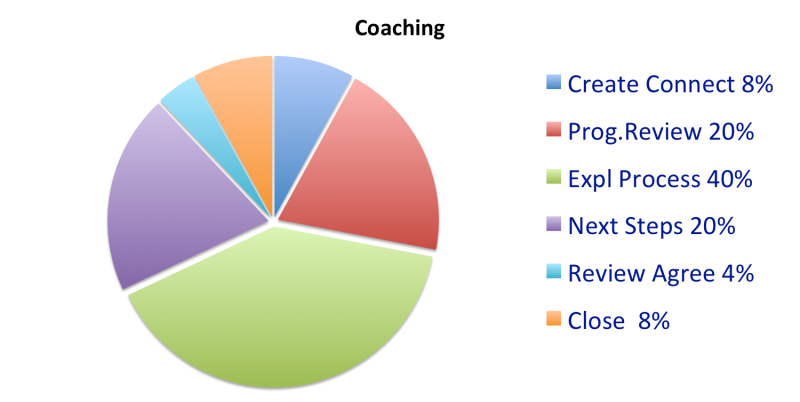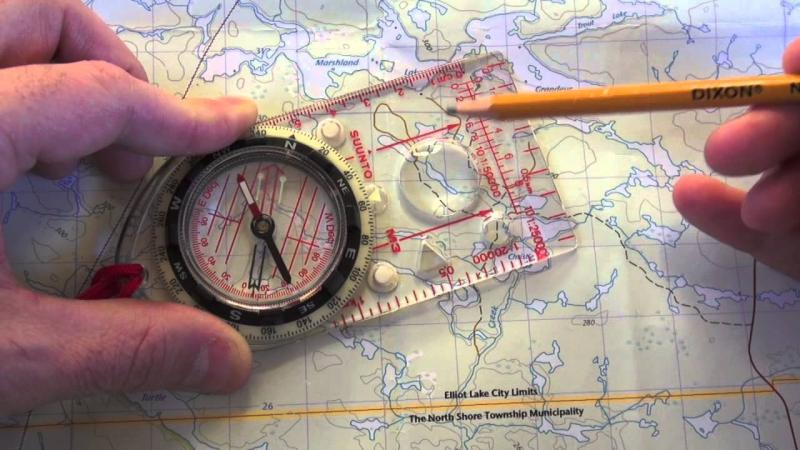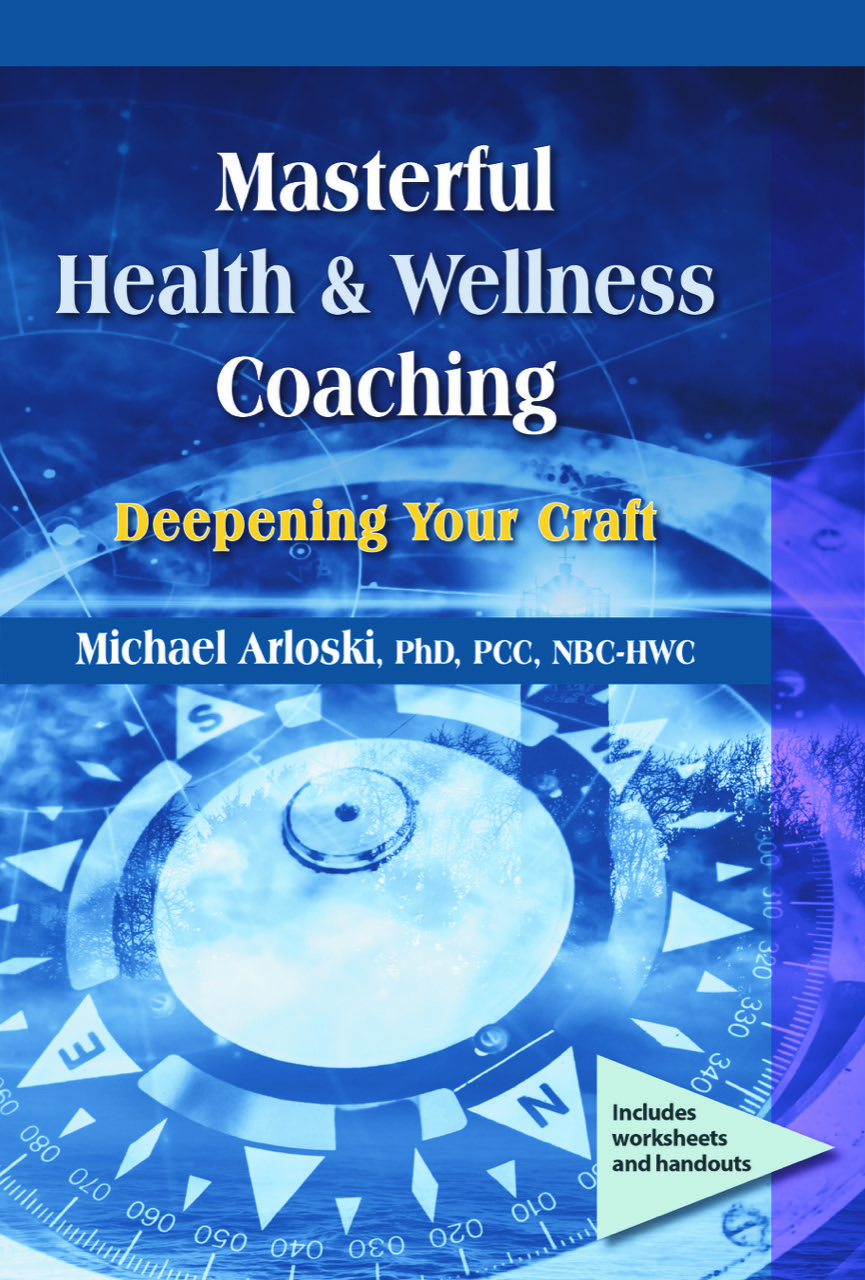Structure Is The Wellness Coach’s Friend: Seven Ways To Coach Better

Great coaching finds a balance between structure and spontaneity, customization, “dancing in the moment” and organization. While some large coaching organizations err on the side of too much structure, using scripts and ridged protocols, some coaches “wing it” way too much. Listening to hundreds of coaching recordings, done with real clients, I’m continually amazed at how loosely many coaches go about their work. Observing the variance in structure, or lack thereof, led me to create some suggestions for how you can discover the benefits of coaching structure for your coaching sessions.
1. Every Session Is A Small Part Of A Whole
Think of each coaching session as part of the larger coaching process and relationship. Keep the individual session in the context of the entire work you are doing with that client.
First sessions, or what we often call Foundation Sessions, or Discovery Sessions, are unique in that they are all about Co-Creating the Coaching Alliance. In this first session there is a lot to do in addition to listening to the client’s story. Typically, two to three times longer than a regular subsequent session, these sessions allow for getting acquainted, creating agreements about the coaching, familiarization with the client’s story, their concerns, etc. The number one error in Foundation Sessions is to get caught up in the story and take a problem-solving approach right out of the gate. Clients benefit much more from you two building the coaching alliance, taking stock of their wellness, and getting clear about how coaching works.
Regular coaching sessions also need to be thought of by the coach in terms of the larger coaching process. Is this one of the early sessions, or are we starting to work towards termination? Coaching does not go on forever and many coaching contracts involve a limited number of sessions. Also, how does this session fit in to the overall Wellness Plan that you and your client have formulated? How does the “issue” that they just brought up today have relevance to their Wellness Plan?
2. Co-Create The Agenda At The Beginning Of Every Session
Certainly, one of the most common errors coaches make is to start a session with a vague invitation like “So! What do you want to talk about today?” Most often client’s immediately think of some sort of barrier they would like to deal with and coach and client instantly begin a problem-solving discussion. I’ve actually heard coaches begin a session with the even more vague request, “What’s up?”. If a specific problem doesn’t jump to the client’s mind, the client might flounder for a while until lighting upon a topic to discuss.
This approach conveys to the client that the coach is a consultant with whom to solve problems instead of an ally in a process of growth and development. This is where some co-creating the agenda first sends a very different message as well as setting up the session for success.
 What works best is a discussion of what all will be talked about in the session and what the client wants to get out of the meeting together. ICF (International Coach Federation) examiners are looking for this kind of review and agreement at the beginning of every coaching session. Just like in a team business meeting, co-creating the agenda means taking in all of the topics to be discussed and then setting an agenda based upon strategy and priorities. It’s best to go with a reasonable blend of urgent and important, remembering that not everything is, in fact, urgent and important.
What works best is a discussion of what all will be talked about in the session and what the client wants to get out of the meeting together. ICF (International Coach Federation) examiners are looking for this kind of review and agreement at the beginning of every coaching session. Just like in a team business meeting, co-creating the agenda means taking in all of the topics to be discussed and then setting an agenda based upon strategy and priorities. It’s best to go with a reasonable blend of urgent and important, remembering that not everything is, in fact, urgent and important.
3. Make Checking-In About Wins And Go Beyond Just Hearing Reports
 Begin with Wins! “Tell me about some progress you made in improving your lifestyle since we last talked?” Coaching is an inherently Positive Psychology approach designed to build upon strengths. Make good use of that. Acknowledge those wins. Don’t just say “Okay.” Inquire more about them, request clarification.
Begin with Wins! “Tell me about some progress you made in improving your lifestyle since we last talked?” Coaching is an inherently Positive Psychology approach designed to build upon strengths. Make good use of that. Acknowledge those wins. Don’t just say “Okay.” Inquire more about them, request clarification.
Transition from Wins into checking-in on the accountability agreements that were made last time on action steps. As you do, urge your client to go beyond just reporting what they did. Begin to help them explore those actions to gain greater understanding of what worked and can be reinforced, what didn't and what got in the way. Look at how you can facilitate your client’s exploration of their actions and themselves. Head into new territory and watch your client grow!

4. Once You’ve Got A Wellness Plan Navigate By It
The map you navigate by, once you co-create it with your client, is the Wellness Plan. Now, whatever comes up in coaching is always put in the context of its relevance to the Wellness Plan. The plan is flexible, changeable, but if you want to get results, you continue to follow it. This is where time is saved by steering back away from tangents and irrelevant topics. This is where “What do you want to talk about?” becomes obsolete. Ask yourself, and perhaps your client “Are we still on the map?”
5. Process – But Don’t Get Lost In It
The bulk of most coaching sessions is about processing the client’s efforts at implementing the Wellness Plan. You and your client can have a lot of fun strategizing through barriers, coming up with creative approaches to making progress on goals, and more. The mistake most coaches make it to use 90% of the session doing just this and not leaving enough time for Next Steps. It’s so easy to “get into the weeds” where “the devil is in the details” and get lost. Stay focused and get back to the backbone of the process – the Wellness Plan. Problems become about relevance to the plan. Problems from the past become about relevance (how are they affecting implementing the Wellness Plan in the here and now), not about resolution (that’s the job of therapy).
 6. Leave Time For Next Steps
6. Leave Time For Next Steps
Effective coaches are watching the clock and know to leave about one-third of the session for Next Steps. Processing until there are only five minutes left is a sure way to set your client up to struggle instead of leaving with a clear plan of how to move forward and make progress. Look at what’s working and what needs to be adjusted. Create agreements about the action steps the client is committing to for the time between now and the next session. It often comes down to Reset, Recommit, or Shift. Will they benefit from resetting the level of the action step – going from walking 5x/week to 3x/week? Or, is the best strategy to re-commit to the same action step at the same level for this week? Or, is it best to strategize a shift to a whole new action step? That will require adequate time to do well.
 I would believe only in a God that knows how to dance. – Friedrich Nietzsche
I would believe only in a God that knows how to dance. – Friedrich Nietzsche
7. Pick The Music But Stay Light On Your Feet
Coaching structure provides the framework for progress. It is like the music that the coaching couple picks to dance to. Coaches perpetually use the expression “dancing in the moment” for good reason. Don’t be afraid to let go of the structure of a session in order to deal with what is more important. Your client may need your support in dealing with a very emotional issue. There may be something that needs to be confronted about the way the two of you are coaching together that may be critical to progress, or even the continuation of coaching. If the coaching seems stuck and progress is lacking, have the courage to explore with your client how the two of you can work better together. Shift the dance of coaching to deal with what has emerged, but then, get back to the music and the structure that will facilitate the progress your both want to make.


For more about effective coaching refer to Wellness Coaching For Lasting Lifestyle Change, 2nd Ed., by Michael Arloski, Ph.D., PCC, CWP, NBC-HWC. https://wholeperson.com/store/wellness-coaching-for-lasting-lifestyle-change.shtml and to Your Journey to a Healthier Life (Paths of Wellness Guided Journals) by the same author. https://wholeperson.com/store/your-journey-to-a-healthier-life.shtml








Only registered and logged in readers can leave comments.